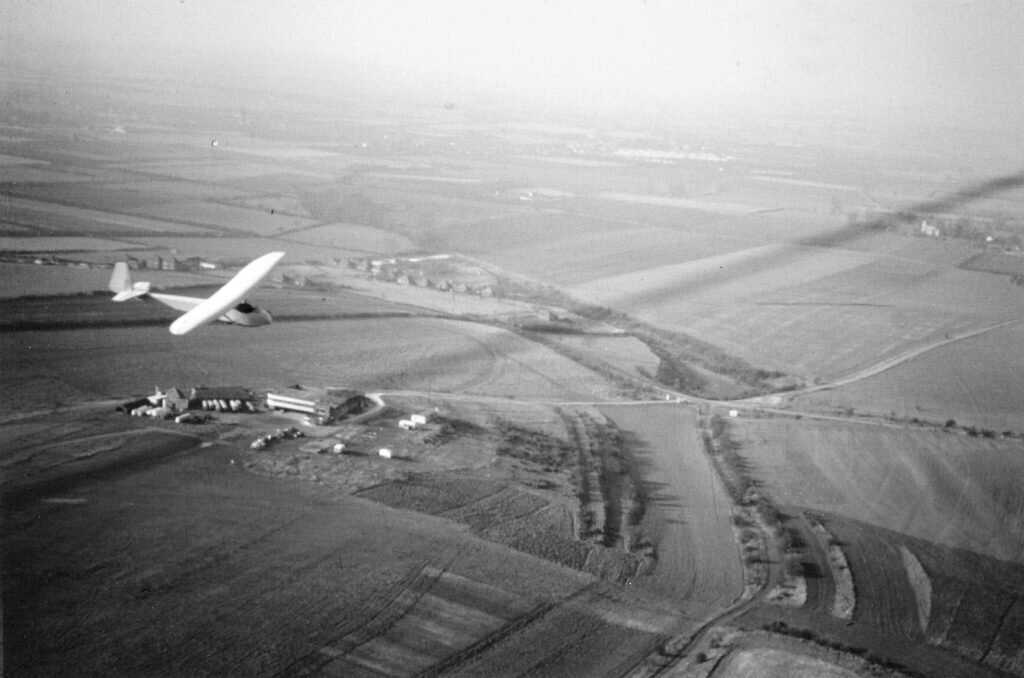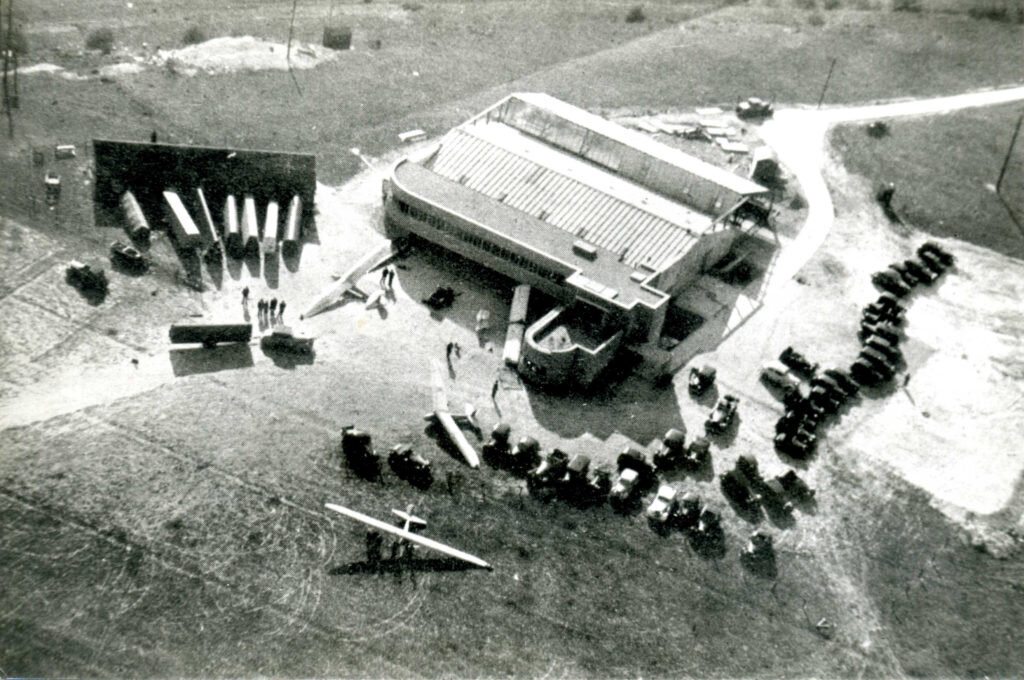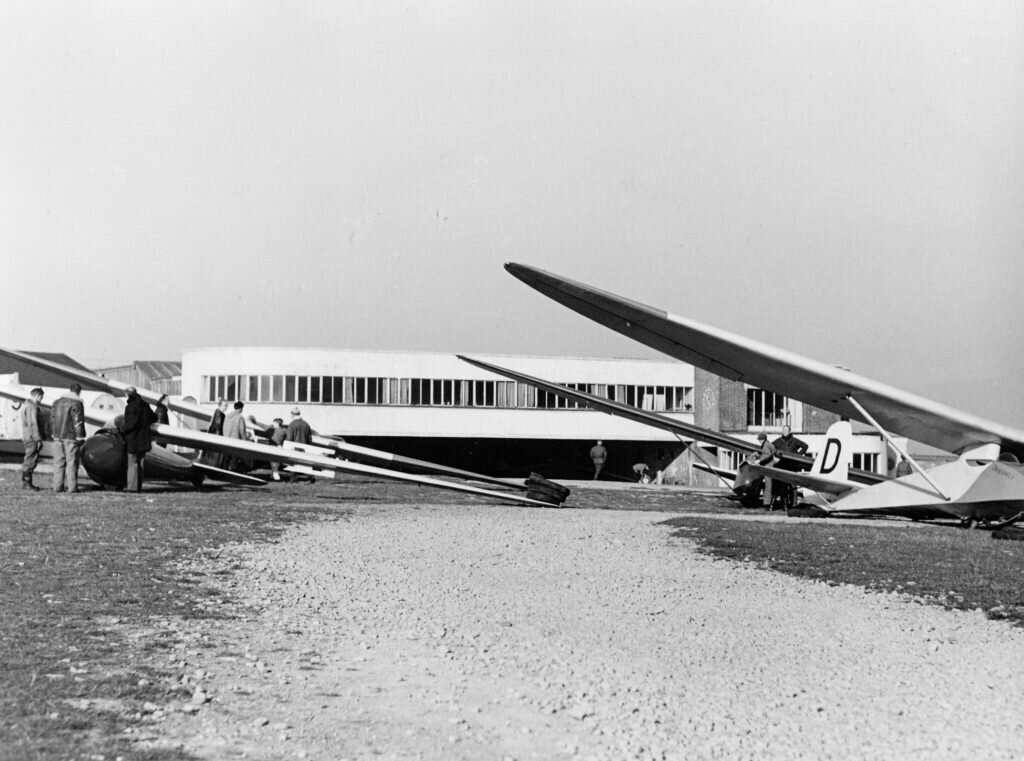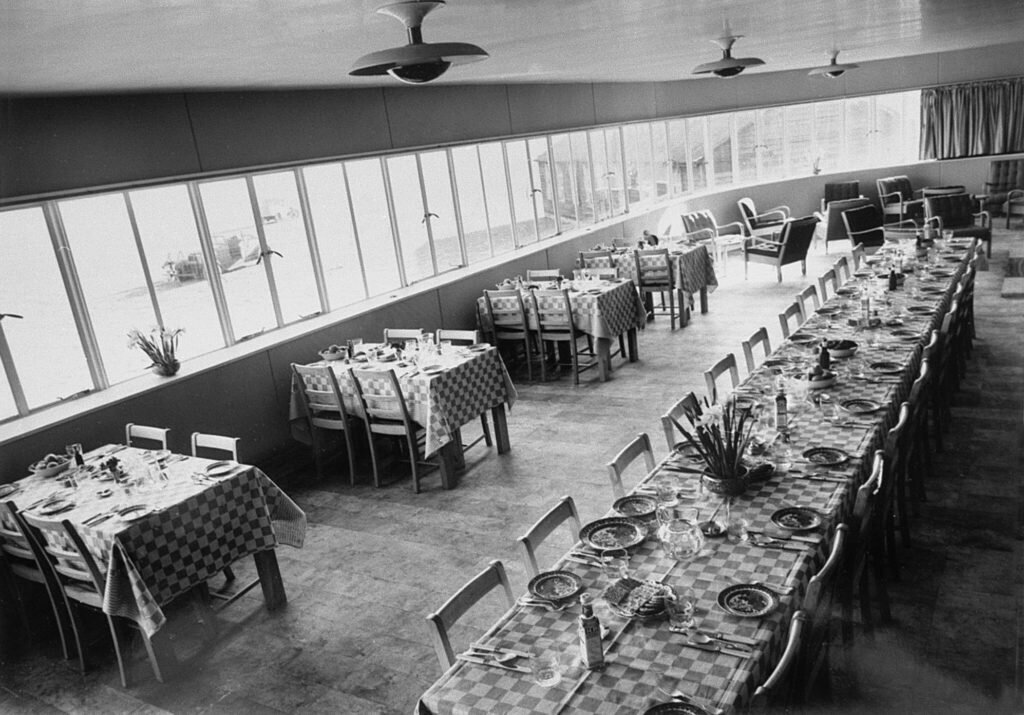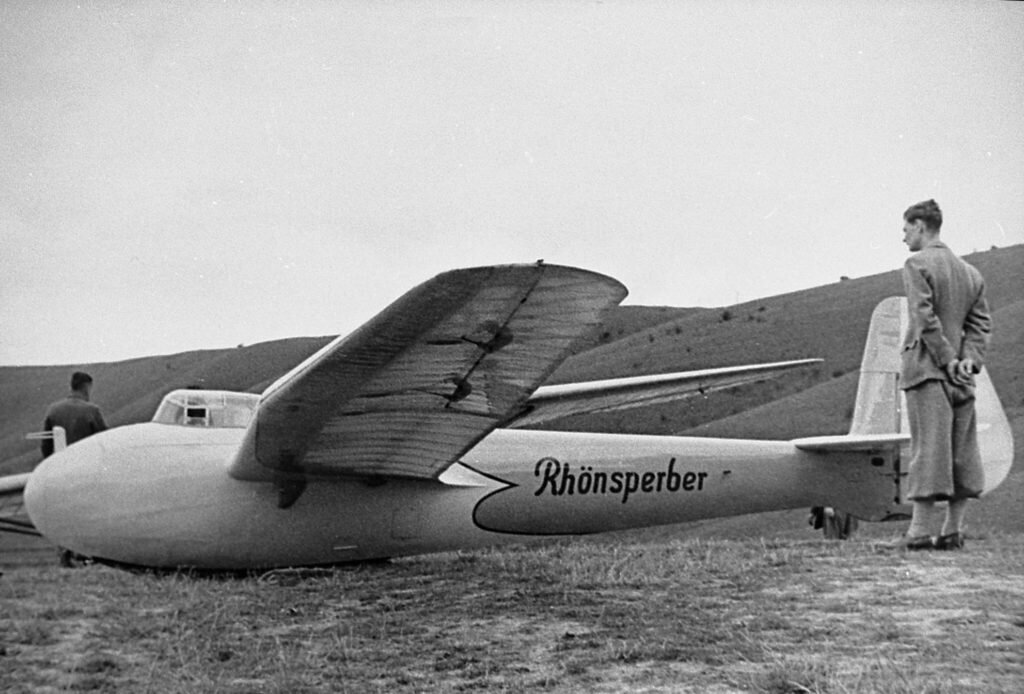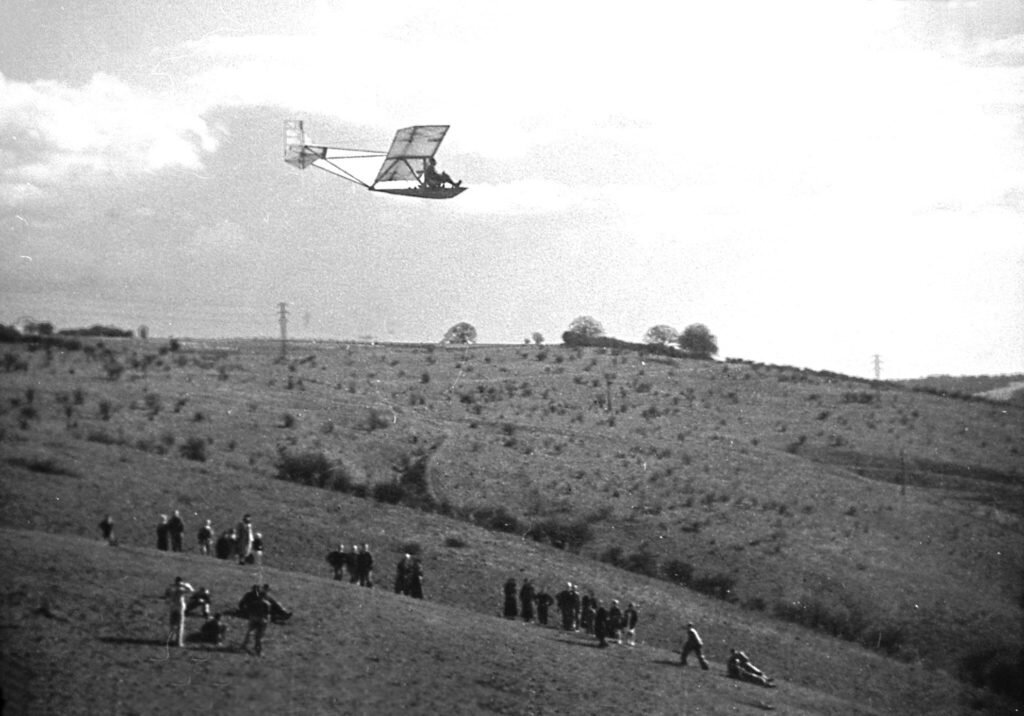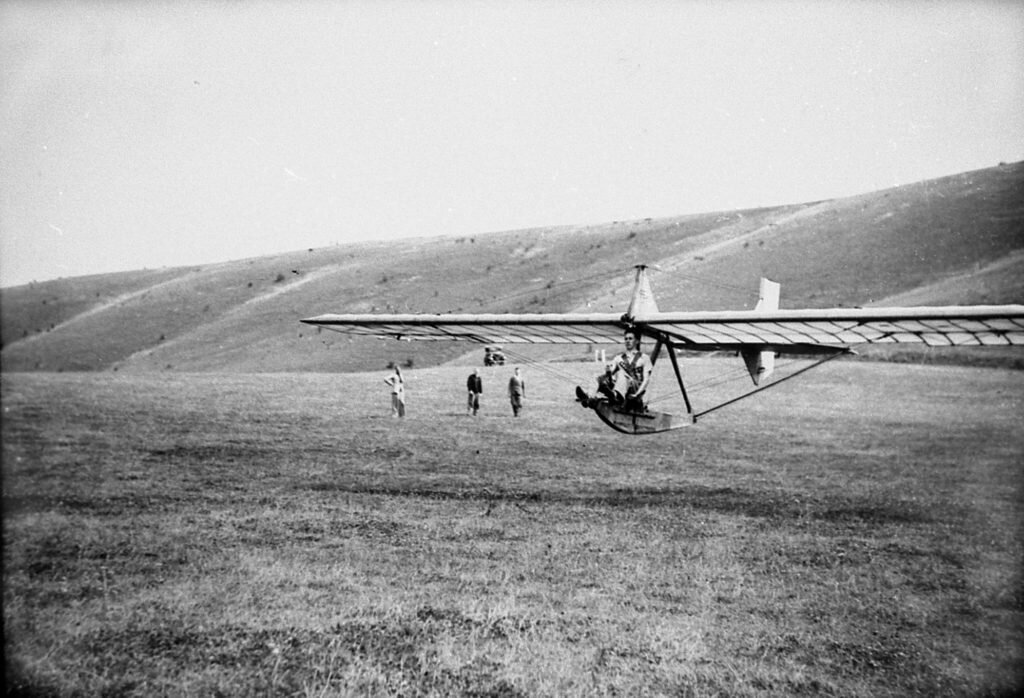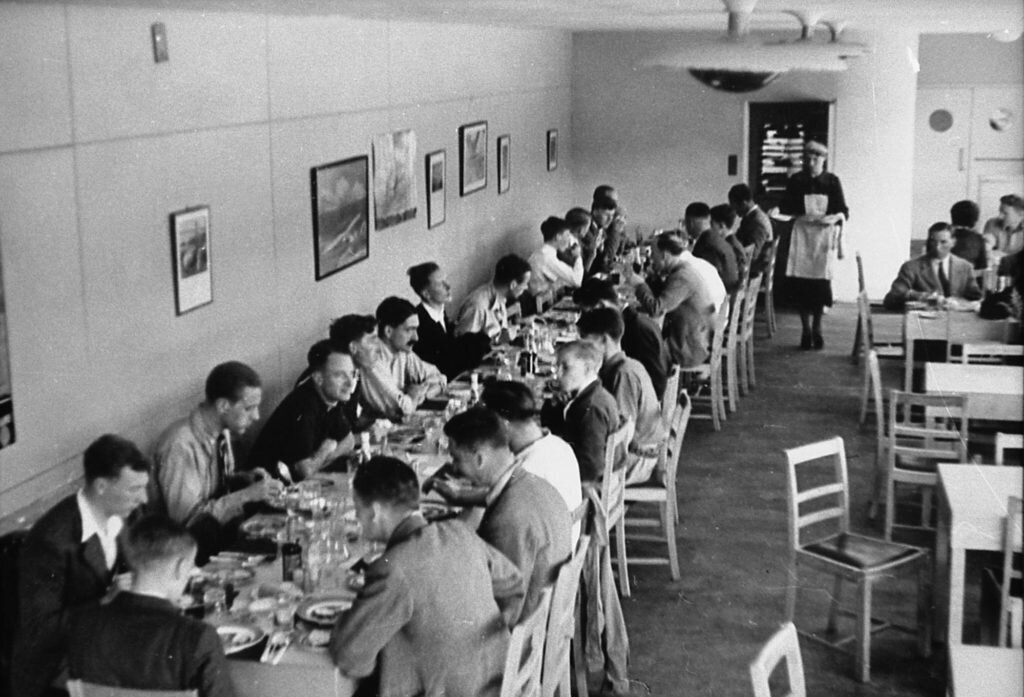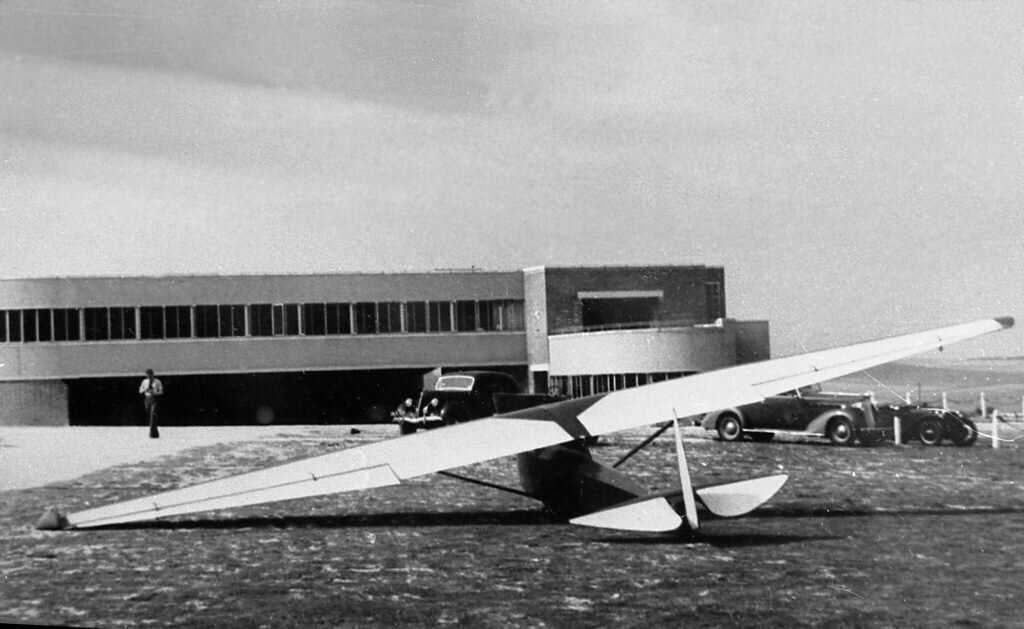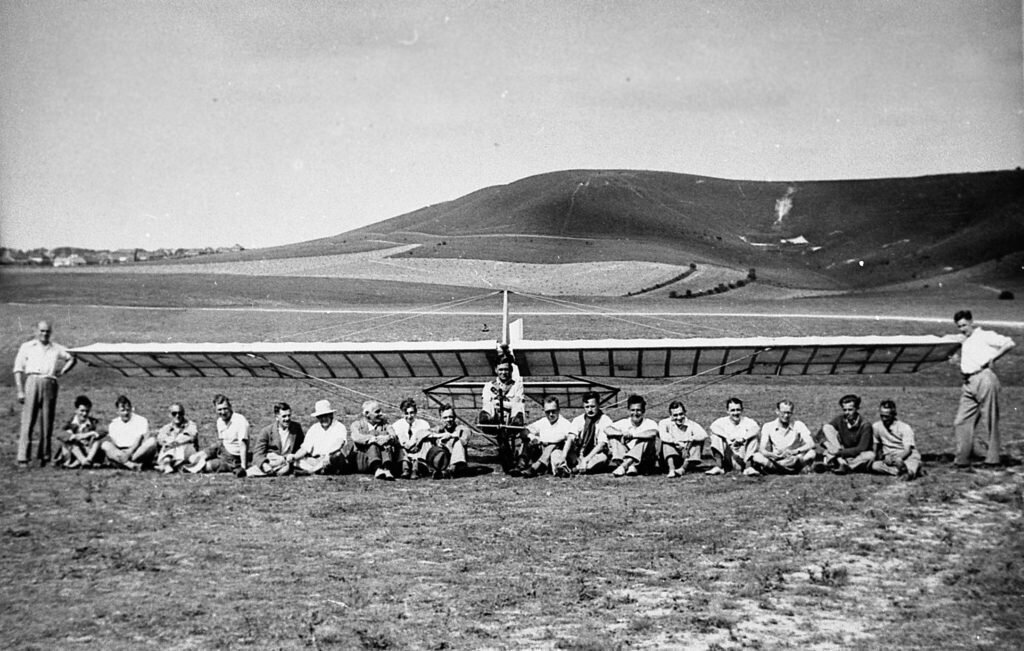
Our History
Founding members of The London Gliding Club met on 2 January 1930 and the Club was officially inaugurated on February 20th.
In March the first flights took place at Stoke Park Farm in Guildford, Surrey. By May the club had secured the use of Ivinghoe Beacon in Buckinghamshire.
The gliding activity attracted so many visitors that special trains were laid on from Euston to Tring. This peaked in July by a visit by the then Prince of Wales, Prince Edward.
The crowds caused chaos on the local roads and soon after the club was evicted from Ivinghoe Beacon after the National Trust accused it of “spoiling its peaceful enjoyment by the public".
The club moved again, initially to a farm in Totternhoe and then to its current location at ‘Pascombe Pit’ - still known to members as ‘ The Bowl’.
The gliders were launched by bungee from the top of the hill with the pilots flying along the hill having instructions relayed to them by flag signals for "too fast" or "too slow".
The first hangers had been erected on the site by 1932. In 1935 these were replaced by the present hangar and clubhouse, designed by the then renowned architect Kit Nicholson who also later became National Champion. The building became Grade 2 listed in 1995 and still retains all the character of its 1930’s heritage. Amazingly the opening to the hangar is just wide enough for us to keep the vast majority of our fleet inside when not in use.
Right from the start, the London Gliding Club has been a pioneer in the art of soaring. The first cross country flight in the UK was done from Dunstable, as was the UK’'s first “Silver C”.
In 1939 Geoffery Stephenson took his Gull glider for a winch launch and landed many hours later in Northern France having, barely, crossed the English Channel. Early records were also set at Dunstable for duration (22hrs in 1937) as well as height (over 14,000ft in 1939).
During the Second Word War gliding was prohibited and the club became a prisoner of war camp. Several club members played important roles in the military Glider Training School.
Two of the camp buildings remain, our tractor and vehicle fuel storage is kept in what was the guardhouse and cells, known as “the prision”. What used to be the camp cookhouse is now known as the “otley” building and is available for members to work on their aircraft. Foundations of some of the accomodation blocks and perimeter fence can still be seen.
Since reopening in 1949 and over the subsequent years, the club was able to purchase the fields adjoining the original land and by the 1960’s the airfield reached reached its present size.
To this day Dunstable pilots have continued to set new records as well as win trophies and championships, both across the UK and at international competitions.
Whilst we now hold our annual regional competition, we also occasionally hold National events. However, back in the 1970’s we did hold the European Championships.
Originally gliders were made of wood, with wings of painted fabric, supported by metal struts or bracing cables. In the 1950’s training was in open cockpit Slingsby T21 gliders, replaced in the 1960’s by the Alexander Schleicher K13.
Since reopening in 1949 and over the subsequent years, the club was able to purchase the fields adjoining the original land and by the 1960’s the airfield reached reached its present size.
To this day Dunstable pilots have continued to set new records as well as win trophies and championships, both across the UK and at international competitions.
Whilst we now hold our annual regional competition, we also occasionally hold National events. However, back in the 1970’s we did hold the European Championships.
Originally gliders were made of wood, with wings of painted fabric, supported by metal struts or bracing cables. In the 1950’s training was in open cockpit Slingsby T21 gliders, replaced in the 1960’s by the Alexander Schleicher K13.
By the end of the 1980’s we had a much more standardised the fleet, with fibreglass ASK21 dual seat trainers and ASK23 single seaters largely replacing their wood and fabric built predecessors, these remain the core of our fleet today.
Despite some of them approaching 40 years old, they are still considered to be some of the most modern, safest and reliable gliders ever made. The K21 is seen by many the world over as the best training glider available.
Today there are over 100 gliders based at Dunstable. This is in addition to the 14 that are owned by the club for training and use by its members, the rest all being privately owned.
Some of these come from the earliest years of gliding and are still flying. We have an enthusiastic vintage gliding group within the club. They provide a unique view into the past when gliding was still in its relative infancy but with some models showing the then latest design techniques.
At the other end of the scale, we have some of the most modern and advanced gliders in the world that their owners are always pushing to achieve the best they can do on any given day. Much like their Vintage counter parts, they also demonstrate the latest technological and design theories.









